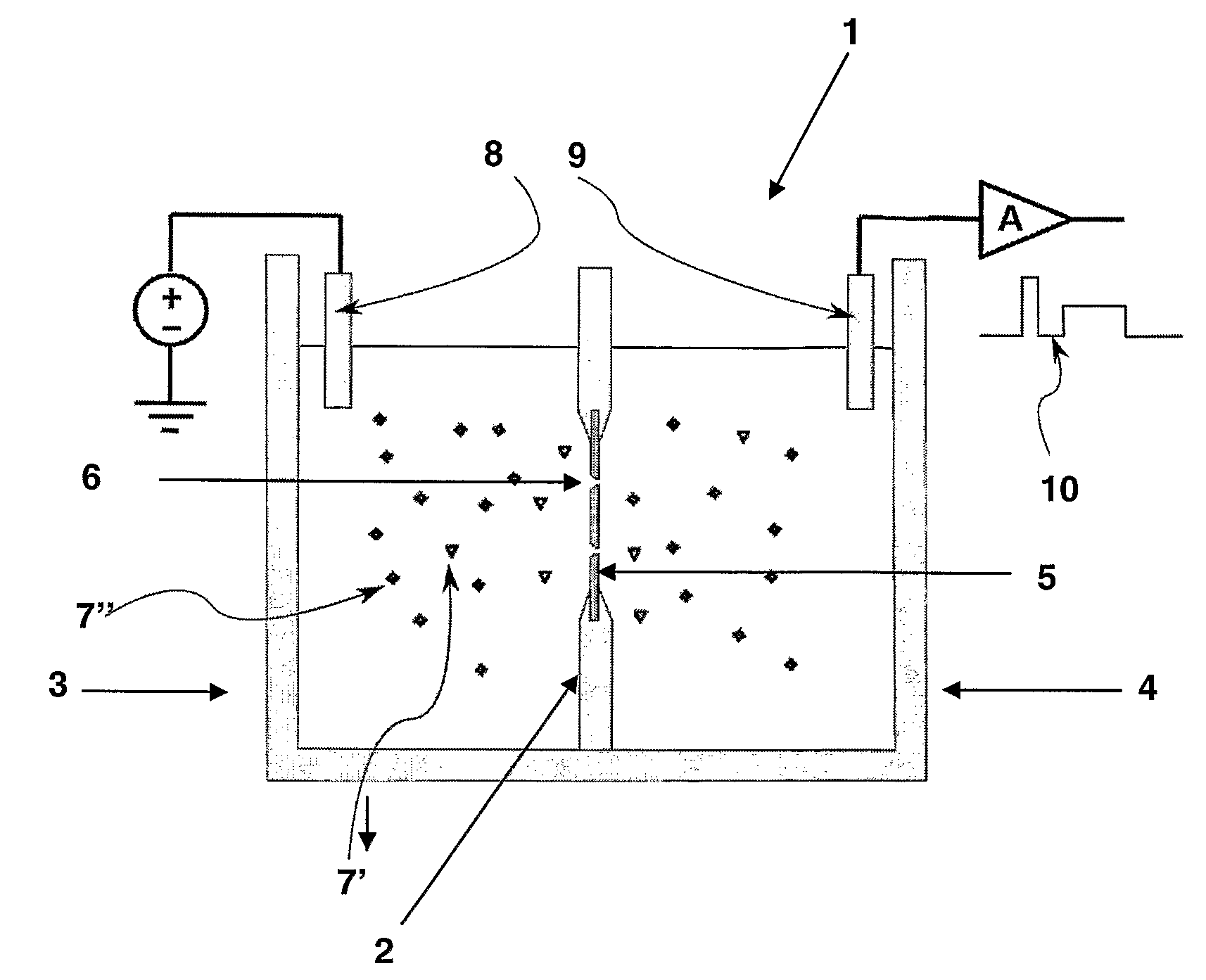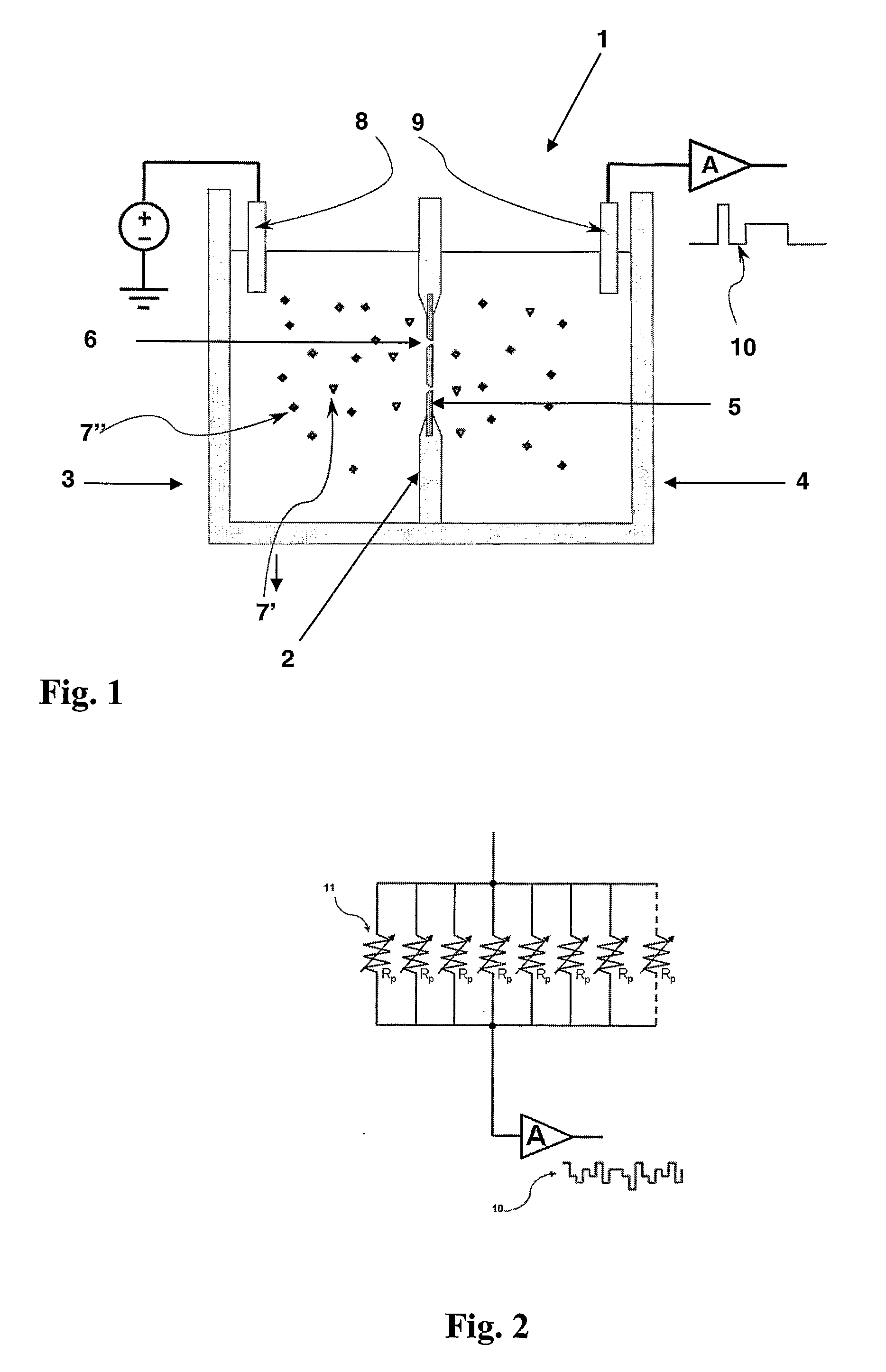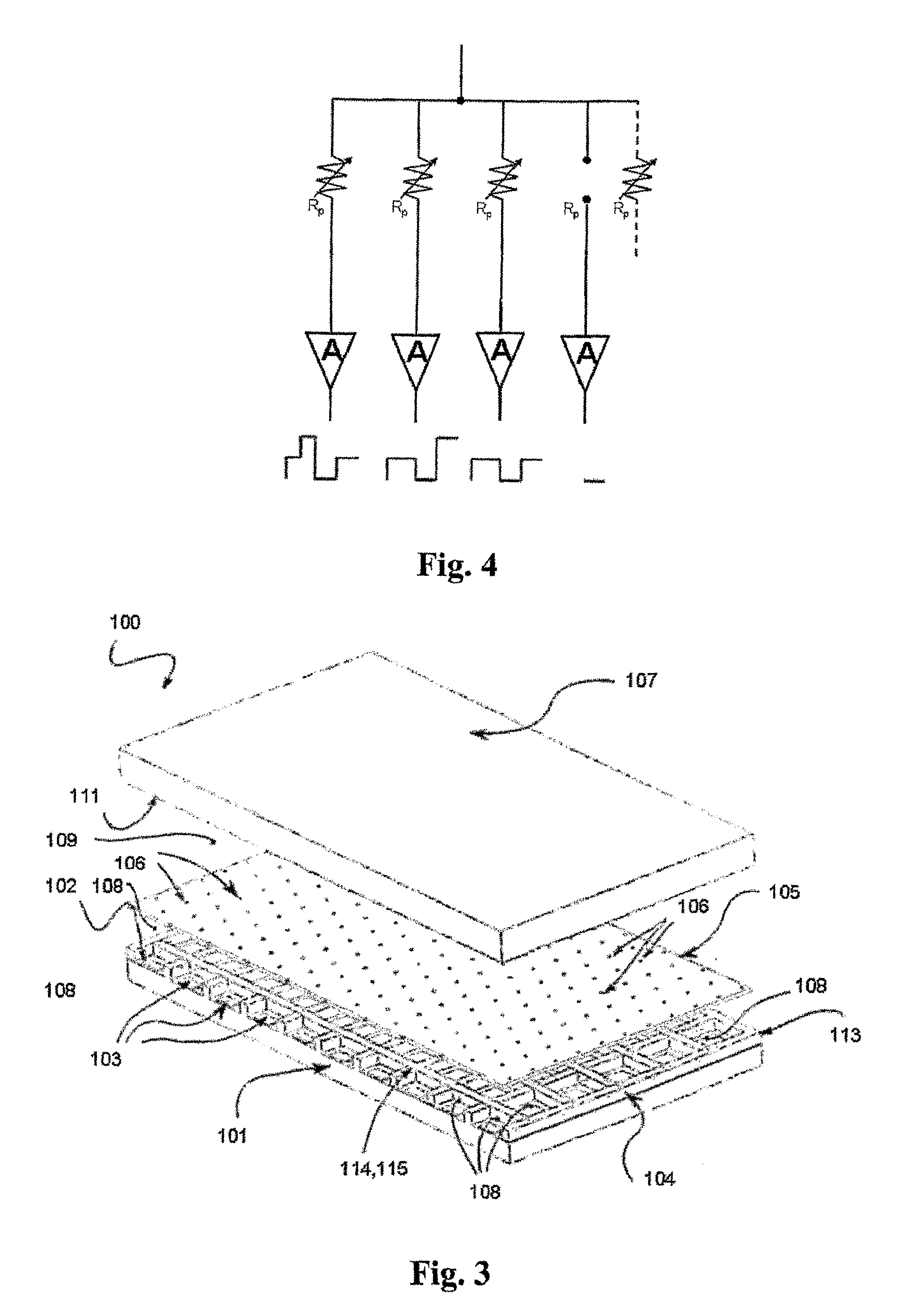Apparatus and Method for Counting and Identifying Particles of Interest in a Fluid
a technology of particle identification and apparatus, applied in the field of apparatus and a method for counting and identifying particles of interest in fluids, can solve the problems of labeling considerably interfering with the ability of proteins to interact with other small and non-proteic molecules, lipids, nucleic acids, etc., and the use of molecular labels is extremely complicated and one of the most important frontiers of diagnostic research
- Summary
- Abstract
- Description
- Claims
- Application Information
AI Technical Summary
Benefits of technology
Problems solved by technology
Method used
Image
Examples
first embodiment
[0045]In the invention, such separation means 114 consist of a grid 115, each mesh of which physically delimits each single electrode 103 of the plurality of electrodes arranged as an array from the adjacent electrodes, substantially defining a corresponding plurality of first chambers 108′ each comprising a single electrode 103.
second embodiment
[0046]In a second embodiment, separation means 114 consist of a grid 115′ (not shown) the meshes of which have a size larger that those of a single electrode 103, and more in particular in a grid 115′ each mesh of which physically delimits a subset of first electrodes 103 from the adjacent electrodes, substantially defining a plurality of chambers 108′ each comprising a corresponding subset of electrodes 103. Also in this case, according to the invention, the condition occurs in which the number of electrodes 103 in each chamber defined by a single mesh of grid 115′ is greater or equivalent to the number of openings 106 in the portion of partition 105 delimited in turn by the same mesh of grid 115′.
[0047]The components which form apparatus 100 are stacked in close contact with one another (or even stacked). The geometrical arrangement of openings (also nanopores) 106 with respect to the surface of partition 105 may substantially be any, as the matrix structure allows, during process...
PUM
 Login to View More
Login to View More Abstract
Description
Claims
Application Information
 Login to View More
Login to View More - R&D
- Intellectual Property
- Life Sciences
- Materials
- Tech Scout
- Unparalleled Data Quality
- Higher Quality Content
- 60% Fewer Hallucinations
Browse by: Latest US Patents, China's latest patents, Technical Efficacy Thesaurus, Application Domain, Technology Topic, Popular Technical Reports.
© 2025 PatSnap. All rights reserved.Legal|Privacy policy|Modern Slavery Act Transparency Statement|Sitemap|About US| Contact US: help@patsnap.com



